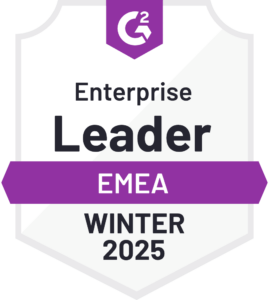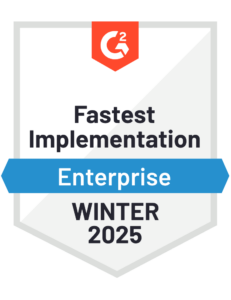Managing Intercompany Transactions: There’s a Better Way
Blog post
Share
Over the years I have worked with several enterprise organizations who have been trying to solve intercompany challenges. With hundreds of legal entities, thousands of resulting relationships and hundreds of thousands of intercompany transactions, these challenges can be a burden on accounting teams.
For many organizations, a significant proportion of these transactions will be trade-related and can often be handled through the standard Procure to Pay process within the ERP. However, non-trade transactions such as recharges can be problematic as both parties must come to an agreement before manually posting the charges for each entity.
The challenges related to these types of transactions can increase significantly as organizations grow through mergers or acquisitions, or make changes to their internal structure. These changes can lead to non-standard charts of accounts, disparate ERPs and other systems, or even key-person dependencies that make cross-entity transactions difficult.
Furthermore, if customer-facing processes have been prioritised for continuous improvement for some time, back-office controls such as intercompany eliminations and dispute management processes may have fallen behind.
Best-in-class finance organizations have turned to utilising controls that prevent intercompany imbalances in the first place, rather than relying on after-the-fact reconciliations. In this blog, post I will explore this type of solution and its benefits.
Challenges and Broad-Reaching Implications
The most common issues with intercompany accounting can result in broader financial implications.
For example, an ongoing intercompany imbalance that remains unconfirmed for several days can lead to increased exposure to the risk of write-offs without a formal dispute resolution process.
Equally, organizations who resolve intercompany reconciliations during the month-end close will often utilize ‘top-side’ adjustments above the legal entity level. This can cause conflicts with SOX audits and in-country reporting regulations due to the material accuracy of tax liabilities and stat reporting.
A recent study by Deloitte showed that more than half of surveyed companies were missing defined ownership of the intercompany process and lacked management visibility into the process and key activities. This absence of ownership can be caused by an over-reliance on key-person dependencies when tracking and reconciling transactions. The ownership and integrity of the transactions are therefore not contained within the general ledger, thereby distorting the ‘single source of truth.’
The Preventative Solution to Intercompany
Leading companies across the globe are turning to technology to help solve the problem of intercompany-related challenges. Trintech’s intercompany solution allows for both detective and preventative controls to help manage the intercompany process outside of multiple, disparate ERPs.
Today, detective controls are most commonly used by organizations whereby the parent company performs after-the-fact reconciliations on intercompany transactions. A high-volume matching engine reconciles individual transactions between the trading entities of Subsidiaries A and B, as well as any other transactions that were not initiated through the dedicated intercompany solution. Items are automatically matched together and discrepancies are flagged up to a user to help resolve.
This matching process rolls up to the balance-level cross-company reconciliation at month end to generate a final settlement value for Treasury.
However, a preventative solution can be used in combination with matching as it allows for non-trade transactions to be pre-approved by both trading entities before being simultaneously posted into separate ledgers or ERPs.
With a preventative solution, Subsidiary A can propose a transaction to Subsidiary B. Once A has completed the necessary information, as well as attaching relevant supporting documentation, the dynamic workflow will send the request to Subsidiary B. The workflow can be determined by tolerances and thresholds meaning if the request is over an amount threshold it can go to a defined individual in Subsidiary B for approval.
Before Subsidiary B can approve the transaction, they may be required to add additional information. For example, where the trading entities are using different ERPs with non-standard charts of accounts, B may need to fill in relevant GL information for its ERP.
Once both entities have agreed on the amount with supporting documentation attached, postings are automatically generated by the system for the payable and receivable sub-ledgers as well as creating invoices.
Conclusion
Intercompany accounting will continue to be a significant focus for global organizations. Combined with incremental changes to people and processes, technology can be the solution for companies that currently lack ownership of the intercompany process, deal with ongoing intercompany imbalances or rely on top-side adjustments.
The result will be improved controls and reduced risk as well as greater intercompany processing efficiency, especially when dealing with multiple financial systems.
To learn more about how Trintech can help improve your intercompany processes, download our eBook: Transforming Your Intercompany Accounting Process to Best-In-Class.
Written by: Thomas Edwards, ACMA CGMA
Thomas is a Senior Manager within Finance Transformation at Trintech based out of EMEA. As a Chartered Accountant and with a background in implementing SAP S/4HANA, he draws on his expertise to advise clients on solving challenges in their finance month-end process with technology.






